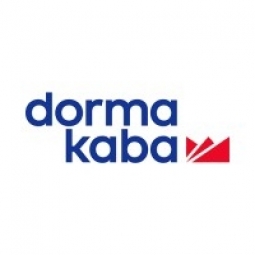Historic Manufacturing Site Vaults into 21st Century by Implementing a Wireless Access Control System

Customer Company Size
Mid-size Company
Region
- America
Country
- United States
Product
- Kaba Access Control’s Wireless System
- Mifare® card credentials
- Autotime® Time and Attendance system
- EPlex® Enterprise System with Wireless Option
- E-Plex Locks and Controllers
Tech Stack
- ZigBee Technology
- Enterprise Software with a Microsoft SQL database
- TCP/IP
Implementation Scale
- Enterprise-wide Deployment
Impact Metrics
- Cost Savings
- Brand Awareness
- Productivity Improvements
Technology Category
- Networks & Connectivity - ZigBee
- Application Infrastructure & Middleware - Data Exchange & Integration
Applicable Functions
- Discrete Manufacturing
- Facility Management
Use Cases
- Building Automation & Control
- Predictive Maintenance
- Real-Time Location System (RTLS)
Services
- System Integration
About The Customer
Kaba Access Control is a manufacturing facility based in North Carolina. The company has a rich history, having been home to a variety of operations including a cotton mill, foundry, and furniture hardware manufacturer. Over the years, Kaba Access Control has leveraged its assets to build a diverse business that includes die-casting, plating, sanding, stamping, assembly, and shipping operations. The company also offers in-house research, engineering, and customer support services. The facility spans 150,000 square feet, encompassing both manufacturing and office space, and employs over 250 personnel. The building, originally a 1905 brick structure, has undergone numerous renovations and additions over the years, transforming it into a complex web of access points.
The Challenge
Kaba Access Control, a North Carolina-based manufacturing facility, has been home to some diverse operations, including a cotton mill, foundry, and furniture hardware manufacturer. The company has utilized its prior assets to build a business that includes die-casting, plating, sanding, stamping, assembly, and shipping operations, as well as in-house research, engineering, and customer support services. The facility includes 150,000 square feet of manufacturing and office space and employs over 250 personnel. Coinciding with its changing businesses, the building’s original 1905 brick structure has undergone a series of renovations and additions, morphing the once basic space into a complex web of access points. The company had managed their access points with an online, wired system, but retired the system when it could not provide expanded coverage at a reasonable cost. With input from the safety committee, the company embarked on choosing and installing a new access control system that would provide a higher level of security and accommodate its numerous users and critical access points.
The Solution
Kaba Access Control decided to replace their legacy wired system with their own Wireless System and Mifare® card credentials. The Wireless System was chosen for its ability to maintain a 'one card' system, with Mifare cards working with their Autotime® Time and Attendance system. The smart card technology also provides future capabilities such as the integration of a biometric application or employee benefit. The Wireless System uses Enterprise Software with a Microsoft SQL database to manage user and access point information from a central location. The software allows users to set up user profiles, including photos, access schedules, and credential assignments by door. The Wireless System also allows users to manage both wireless and stand-alone locks. Some access points such as a janitor’s closet may need security, but due to low usage and limited users, it does not need wireless functionality. However, a standalone lock can be added to the wireless network later by installing a Wireless Antenna Kit and joining the lock to the network.
Operational Impact

Case Study missing?
Start adding your own!
Register with your work email and create a new case study profile for your business.
Related Case Studies.

Case Study
Turning A Stadium Into A Smart Building
Honeywell created what it called the “intelligent system” for the National Stadium in Beijing, China, turning the venue for the opening and closing events at the 2008 Summer Olympics into a “smart building.” Designed by highly controversial artist Ai Weiwei, the “Bird’s Nest” remains one of the most impressive feats of stadium architecture in the world. The 250,000 square meter structure housed more than 100,000 athletes and spectators at a time. To accommodate such capacity, China turned to Honeywell’s EBI Integrated Building Management System to create an integrated “intelligent system” for improved building security, safety and energy efficiency.

Case Study
Remote Monitoring & Predictive Maintenance App for a Solar Energy System
The maintenance & tracking of various modules was an overhead for the customer due to the huge labor costs involved. Being an advanced solar solutions provider, they wanted to ensure early detection of issues and provide the best-in-class customer experience. Hence they wanted to automate the whole process.

Case Study
Predictive Maintenance for Industrial Chillers
For global leaders in the industrial chiller manufacturing, reliability of the entire production process is of the utmost importance. Chillers are refrigeration systems that produce ice water to provide cooling for a process or industrial application. One of those leaders sought a way to respond to asset performance issues, even before they occur. The intelligence to guarantee maximum reliability of cooling devices is embedded (pre-alarming). A pre-alarming phase means that the cooling device still works, but symptoms may appear, telling manufacturers that a failure is likely to occur in the near future. Chillers who are not internet connected at that moment, provide little insight in this pre-alarming phase.

Case Study
BACnet enabled Wireless Temperature Monitoring System
Client offered a Temperature Monitoring System which consists of Wireless Transmitters and Application Software. Third party BACnet Application such as a Building Automation System needs access to vital parameter such as temperature, humidity, CO2, etc., measured by wireless sensor devices. Client needed a solution to allow data exchange from its Temperature Monitoring System with BMS.

Case Study
Aircraft Predictive Maintenance and Workflow Optimization
First, aircraft manufacturer have trouble monitoring the health of aircraft systems with health prognostics and deliver predictive maintenance insights. Second, aircraft manufacturer wants a solution that can provide an in-context advisory and align job assignments to match technician experience and expertise.

Case Study
Leading Tools Manufacturer Transforms Operations with IoT
Stanley Black & Decker required transparency of real-time overall equipment effectiveness and line productivity to reduce production line change over time.The goal was to to improve production to schedule, reduce actual labor costs and understanding the effects of shift changes and resource shifts from line to line.






